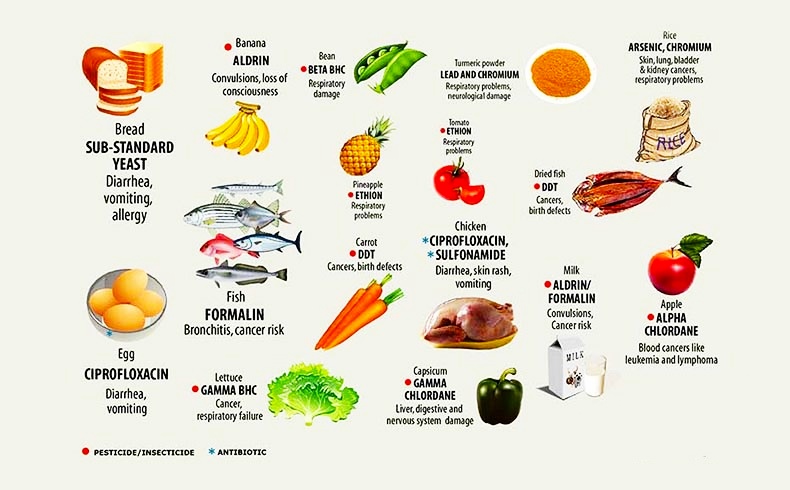FOOD ADULTERANTS
FOOD ADULTERANTS
Food adulterants are substances added to food products to enhance their appearance, flavor, or shelf life, often at the expense of safety and quality. Here’s an overview of common food adulterants, their effects, and methods of detection:
1. Types of Food Adulterants
Chemical Adulterants: Substances that can be harmful, such as:
- Artificial Colors: Used to enhance appearance but may cause allergic reactions (e.g., Sudan dyes in spices).
- Preservatives: Chemicals like sodium benzoate that prevent spoilage but can have health risks in large amounts.
- Sweeteners: Substitutes like saccharin that may pose health concerns.
Biological Adulterants: Microbial contamination, such as:
- Pathogens: Bacteria like Salmonella or E. coli that can cause foodborne illnesses.
- Insects and Rodents: Unintentional contamination by pests.
Physical Adulterants: Foreign substances added to food, including:
- Stones or Dirt: Found in grains and pulses.
- Water: Added to milk to increase volume.
2. Common Examples
- Milk: Adulterated with water, detergent, or synthetic milk.
- Honey: Mixed with sugar syrup or molasses.
- Spices: Turmeric may be mixed with lead chromate, and chili powder may contain artificial colors.
- Oils: Mixed with cheaper oils or additives to alter taste and texture.
3. Health Risks
- Toxicity: Some adulterants can be toxic or carcinogenic, leading to long-term health issues.
- Allergic Reactions: Certain artificial additives can trigger allergies or intolerances.
- Nutritional Deficiencies: Adulteration can lower the nutritional value of food products.
4. Detection Methods
- Physical Examination: Checking for unusual textures or colors.
- Chemical Tests: Specific tests to identify adulterants (e.g., using reagent tests for certain colors or contaminants).
- Laboratory Analysis: Advanced methods like chromatography or mass spectrometry for precise identification.
5. Regulation and Prevention
- Food Safety Standards: Governments and organizations set regulations to monitor food quality and safety.
- Consumer Awareness: Education about recognizing adulterated products and reading labels can help consumers make informed choices.
- Market Practices: Support for local, organic, and certified products to reduce the risk of adulteration.
DIAGRAM:


Comments
Post a Comment